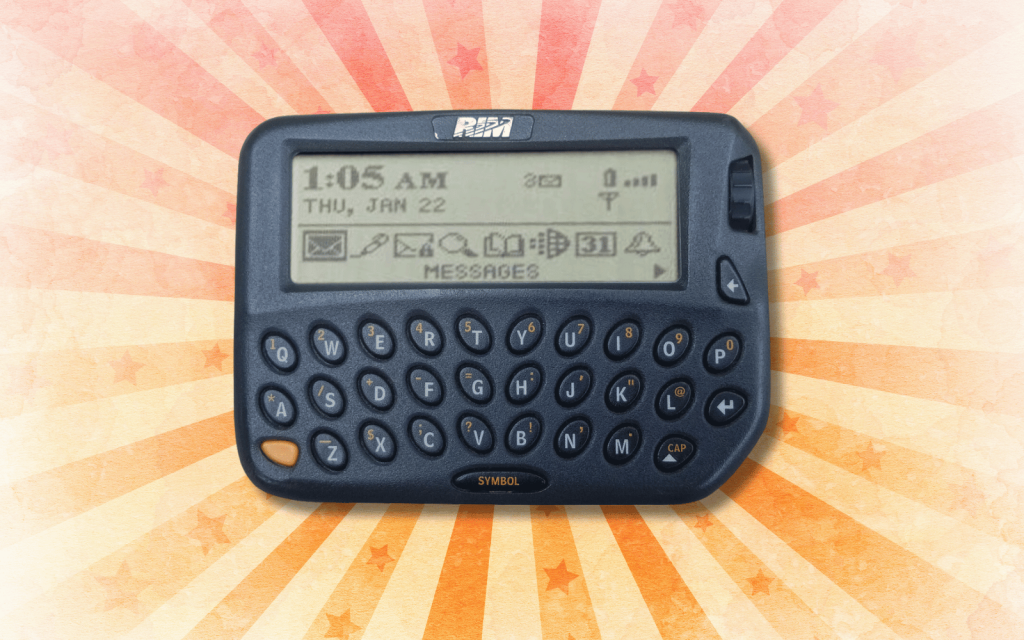Now you’re talking. This one had a proper keyboard, unlike your newfangled phones.
Yes – and that was a big deal at the time. The BlackBerry 850 was tiny, yet had all the keys you needed to rapidly smash out messages – even if you did sometimes wish you could file your fingers down to points. Still, that was better than mashing numbers on a Nokia until it revealed the right letter, or braving its terrifying autocorrect system. In fact, the 850 even excelled there: you could quickly craft custom entries, for example, to expand ‘mon’ to ‘Monday’.
Just as well. Business sorts don’t have time to waste on typing extra letters, you know.
Which is probably why they gravitated to what was, in reality, a souped-up pager. It was all they needed to organise their day, squeezed into a palm-sized device that was always on and always connected. They could manage tasks, peruse calendars, write memos saying things like ‘make money’ and ‘make even more money’, use the calculator to total up their money, and set an alarm to get up early and make yet more money tomorrow. Mostly, though, it became synonymous with email, to the point that fans wouldn’t shut up about it.
Read More: BlackBerry is back, back again
Actually, I’m still using a BlackBerry today as my daily driver for email.
That explains… so much. But you might have noticed no one else is. At the time, a core following was into business devices to do business things, but most people weren’t. For a while that worked for RIM, which made bigger and better BlackBerries; then the iPhone arrived with no keys at all and broke the company’s brain. Years later, it capitulated with the touchscreen-based BlackBerry Storm. Needless to say, the company got quite a few angry emails about that – all typed out on tiny keys.




